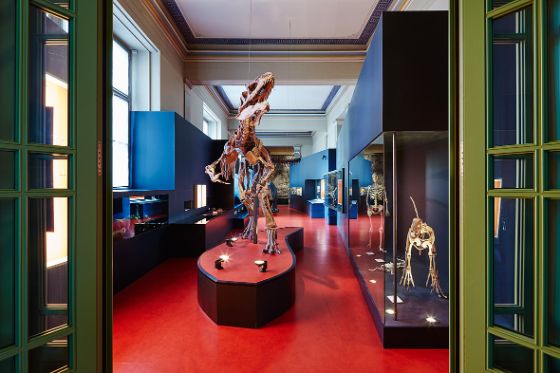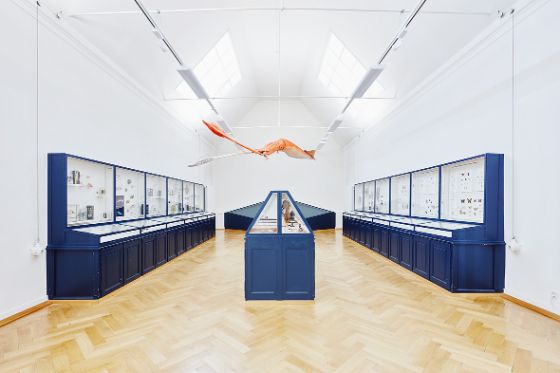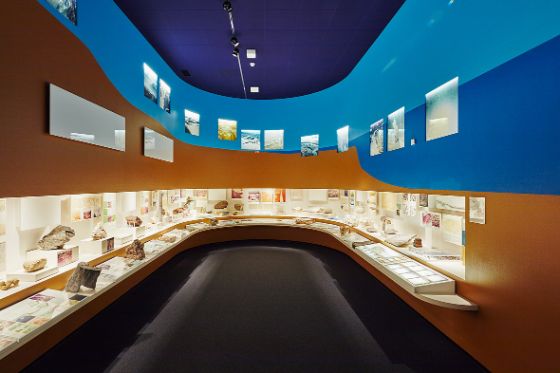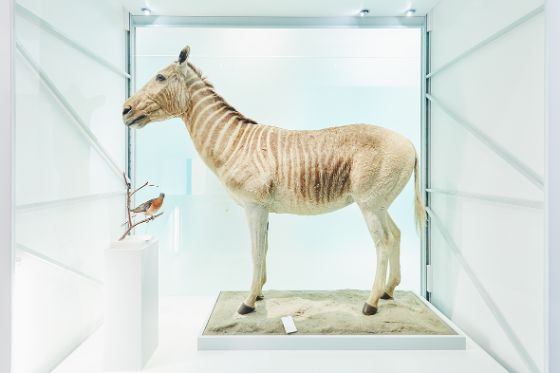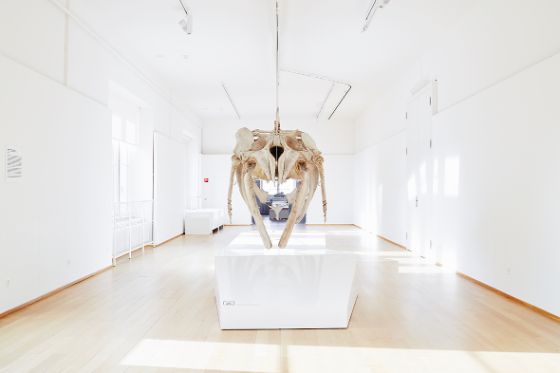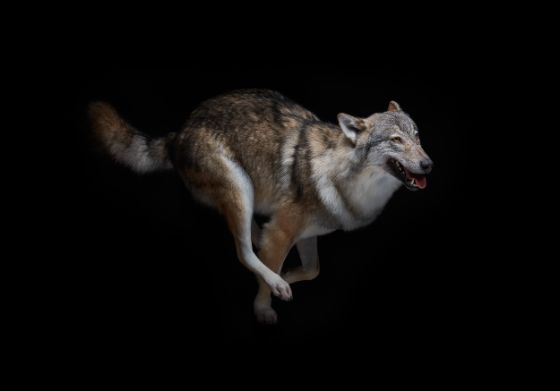
MAMMOTH & SABRE-TOOTHED TIGER IN A LAND BEFORE OUR TIME
Saber-toothed cats, Megaloceros (giant elk), dwarf elephants and humans – the evolution of mammals is spectacular. We showcase mammals and their ancestors using selected rare specimens. The climax of the exhibition is our famous mammoth.
Mammals today account for around 8.5% of all vertebrate diversity. Their history stretches back more than 210 million years, back to the time of the dinosaurs, and their evolution shows evidence of adaptation to every peculiarity of their environment. As a result, there are flying mammals such as bats, purely aquatic groups such as whales, or even blind species that live entirely underground, like the golden mole.
The 'Mammoth & Saber-toothed Tiger' exhibition showcases this diversity and its evolution. Odd-toed ungulates such as horses, rhinoceroses and tapirs have been around for some 50 million years. Their present-day minimal diversity conceals a rich history. The clawed animal on display is an impressive example of this.
At seven million years, human evolution is significantly shorter, but no less breath-taking. Our three-dimensional reconstructions demonstrate the most important steps of this process.
Carnivores, despite their name, are not simply meat eaters. The panda, for example, belongs to the group of carnivores, but its diet is almost 100% vegetarian.
The diversity of life on our planet is evident not just from the almost immeasurable number of its forms, but also from the different ways in which they live. The saber-toothed cat Megantereon, which is on display in our exhibition but which has long since been extinct, was a powerful hunter. It was only able to use its long incisor teeth as blades to inflict a fatal blow, not as a weapon of attack.

